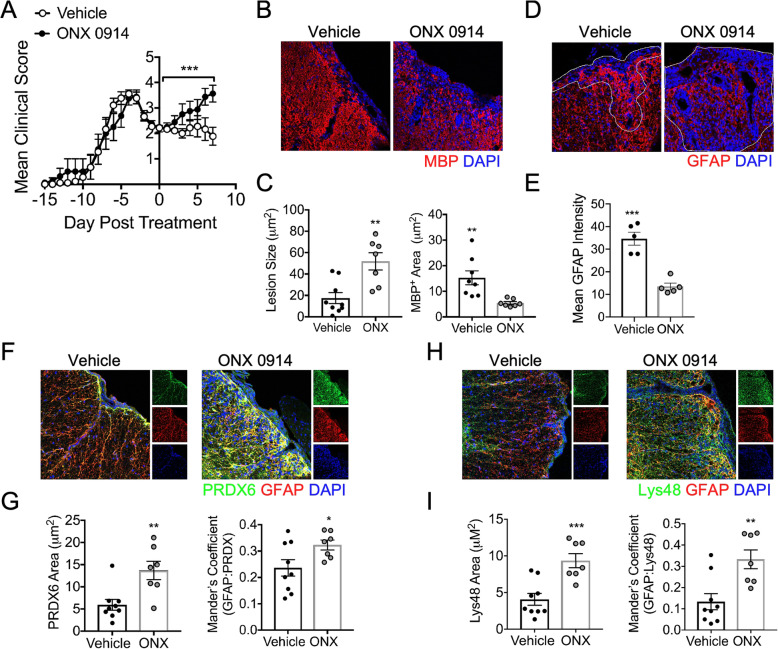Fig. 4.
iP inhibition exacerbates chronic EAE. Animals were randomly assigned to a treatment group, and EAE was induced in WT C57Bl/6 mice. After a stabilization or reduction in EAE, clinical score was observed for two consecutive days, 10 mg/kg ONX 0914 (n = 9) or vehicle (n = 7) was administered. a Following treatment, EAE clinical course was monitored in a blinded fashion, and data is presented relative to day post-treatment. Mice were perfused and CNS tissue was prepared for IHC analysis and ventral white matter tracts of the lumbar spinal cord were imaged using confocal microscopy at 20 × magnification. b Tissue sections were labeled for MBP (red), and nuclei were counterstained with DAPI (blue). c Lesion area and MBP+ area were quantified. d Tissue sections were labeled for GFAP (red), and nuclei were counterstained with DAPI (blue). e Mean intensity of GFAP staining within lesions (outlined) was quantified. f Tissue sections were labeled for PRDX6 (green) and GFAP (red), and nuclei were counterstained with DAPI (blue). g Total PRDX6 area and PRDX6 colocalized with GFAP were analyzed. h Tissue sections were labeled for Lys48 (green) and GFAP (red), and nuclei were counterstained with DAPI (blue). i Total Lys48 area and Lys48 colocalized with GFAP were analyzed. Data in (a) represent the mean ± SEM combined from 2 independent experiments and were analyzed by Mann–Whitney U test for nonparametric data. Data in (b-i) represent the mean ± SEM combined from 2 independent experiments and were analyzed by 2-tailed Student’s t test. *P < 0.05, **P < 0.01, ***P < 0.001

